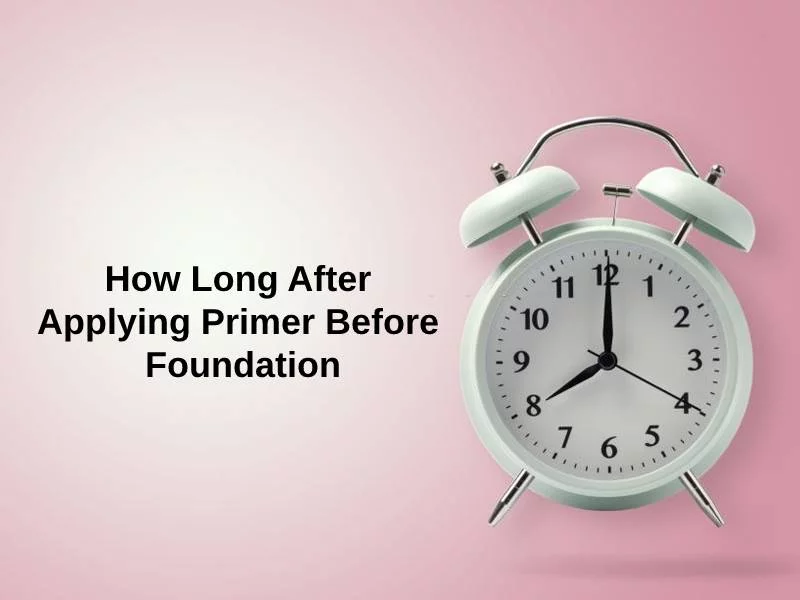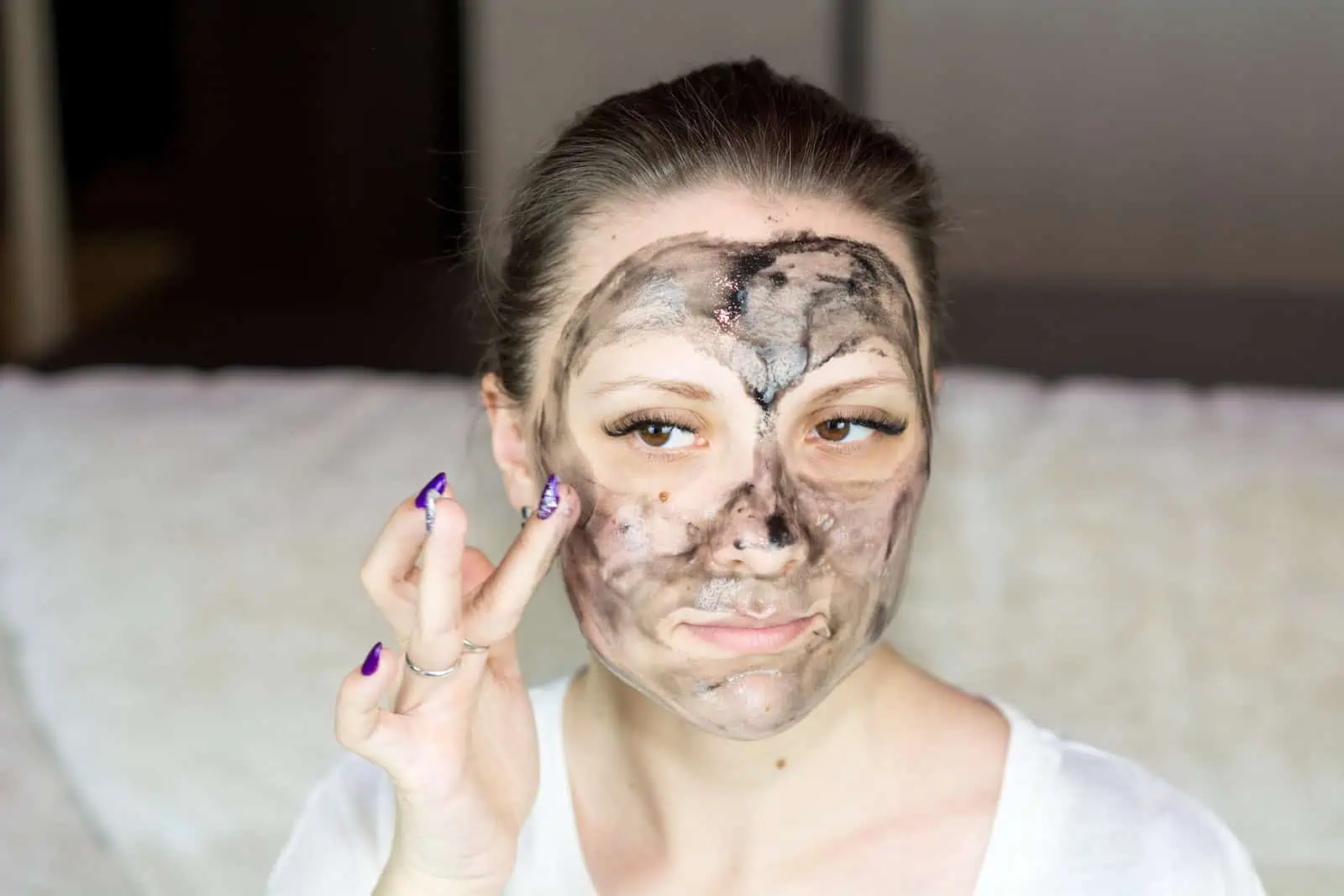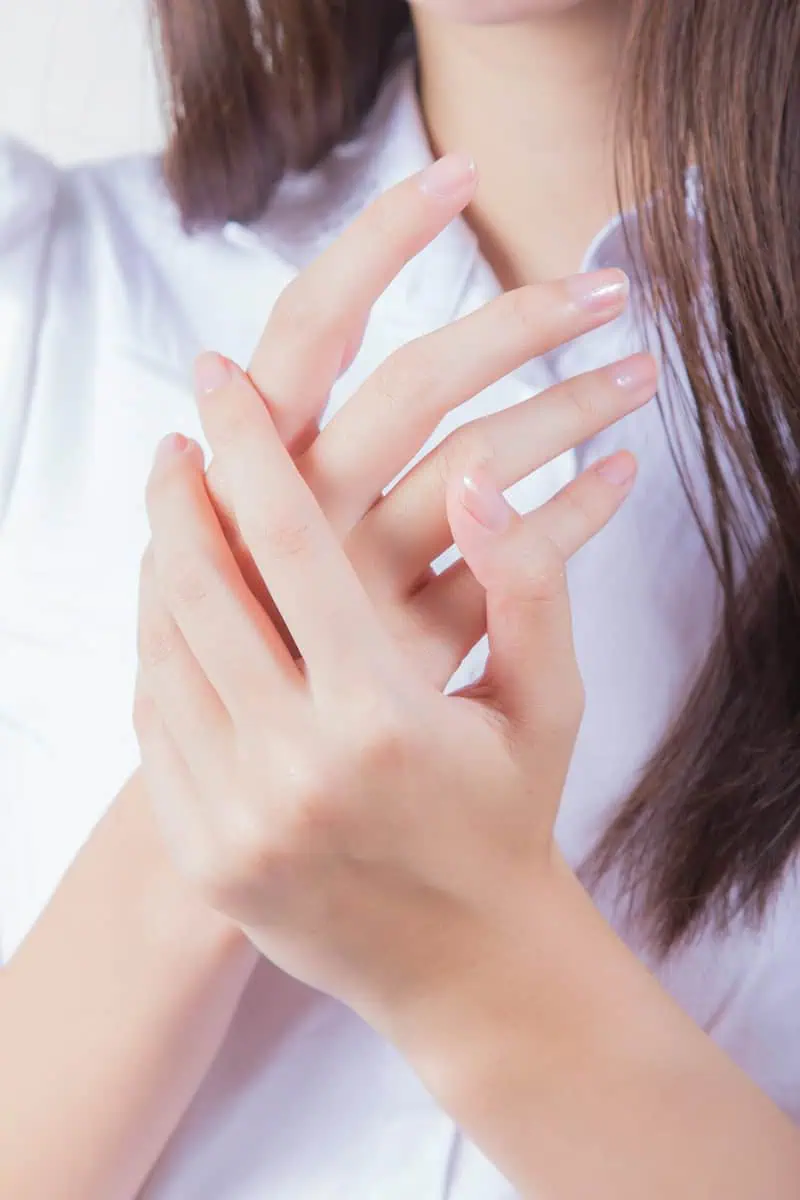Exact Answer: At least 1 minute
With the terms primer and foundation falling under a collective word called makeup, it is very important to differentiate the elements of makeup. This is because they serve different purposes.
Primer is used to prepare the skin for the makeup to sit on. Foundation is a skin-tone-based mixture that is applied, so the rest of the makeup can smoothly be applied on top of it.
There are many types of both primer and foundation, that vary according to consistency, texture, shade, and contents. Hence, always choose the product according to your skin type, as this can greatly affect the way the makeup sits on your skin, and thus your final look.

How Long After Applying Primer Before Foundation?
| Product | Drying time |
| Primer | At least 1 minute |
| Foundation | 3-5 minutes |
Primer is a substance that essentially prepares your skin, and makes it the perfect surface for makeup to adhere to effectively. It must be applied after moisturizer. It helps the skin hold products like foundation and concealer properly.
Using a primer can lessen the amount of product that will be used later on. It gives the skin a dewy and shiny finish. Primers can reduce uneven patches, smoothen skin and blur the pores on the surface. This also gives the appearance of reduced wrinkles and fine lines. Even makeup-wearers who have acne and/or hyperpigmentation can benefit from the use of primers, as they can also retain moisture. Primers have the ability to make oily skin more matte. In addition, primers contribute to a long-lasting and durable makeup look, that does not result in flaking.
Foundation can be worn after at least 1 minute of applying the primer.
Foundation, much like the actual meaning of its name, is the base coat of makeup that is applied before concealer and the rest of the products. This helps build on the makeup. It is applied after primer, and before concealer.

Foundation varies based on skin tone, consistency, and other factors. It can correct skin tone, reduce the visibility of blemishes on the skin, blur wrinkles, pores, fine lines, and more, give a completely uniform and smooth skin surface to work on.
There are many types of foundations. This includes powder foundation, which is used for oily skin; liquid foundation, which is normally applied for an opaque look; cream foundation, which is popularly used by those with dry skin; serum foundation, which also acts as a step of skincare; and water-based foundation, which is a lighter type that is worn by those with acne.
Why Does It Take That Long To Apply Foundation After Primer?
Primer is almost always applied using your fingers as this results in a seamless and even finish across your face. Beforehand, it is important to apply a layer of moisturizer to protect and hydrate the skin. After at least five minutes of waiting for the moisturizer to penetrate the skin and dry, you may then apply the primer.
Then it is normally advised to take a pea-sized dollop of primer, for the face. This provides a thin but effective layer to prep the skin. If you apply too much primer, you can create a slippery surface on the skin, which prevents the makeup from adhering to the face correctly. This doesn’t let the makeup stay on for long.
After the primer is applied, you must wait for at least 60 seconds, before applying the foundation. While choosing your foundation, remember to pick one that suits your skin tone and type, along with the desired coverages and finishes. It is suggested to use up to two pumps of foundation. With a foundation brush, you can gently apply the product onto the skin.
The next step is to grab a makeup sponge that is damp. This sponge helps dab the product into the skin, blending it to create an even and smooth look. Remember to never swipe or smudge the foundation, as this can create streaks on the face once dried.

One of the most common errors when it comes to applying these two products is that foundation is applied too soon after primer. If you do not wait at least a minute for the primer to dry, then the final look will be sabotaged.
Your skin may be subjected to pilling, patches, streaks, unevenness, and makeup that appears too cakey. If the foundation is applied before the primer is dry, then both the primer and the foundation can collect on top as tiny balls of product that refuse to adhere to and soak into the skin. As a result, the makeup can easily wear off.
Conclusion
Primer is very important while applying makeup. So it is important to follow a set order for applying makeup. The first step is a moisturizer to retain moisture and hydrate the skin. The next step is the primer, for prepping the skin for more layers of makeup to come. Next is liquid foundation, which is essentially a base coat for makeup. Next is concealer to provide coverage of blemishes for the skin. Next is the foundation powder.
After this, there are optional steps like bronzer, blush, highlighter, eyeshadow, eyeliner, mascara, and lip makeup. Lastly, it is quite useful to apply setting spray or powder, to make the final finish last longer.